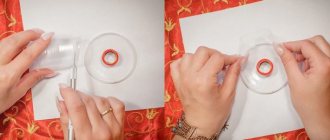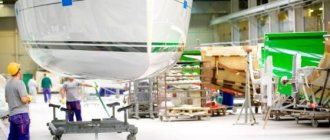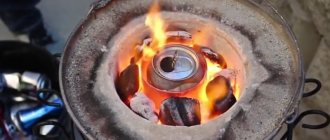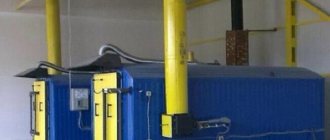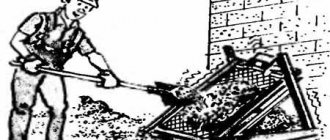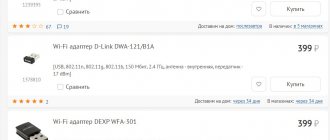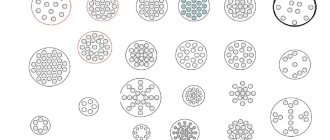How to catch a drag
Breden is a practical tackle for fishing in rivers, lakes, and ponds.
It is mainly used in the warm season: in the spring after high water on floodplains in floodplains, in spring and autumn in small stagnant lakes overgrown with algae in the summer, and in early summer in shallow ponds 1-3 m deep. In winter it is used only during the thaw period. Gear of one design or another is suitable for different bodies of water. Therefore, for good fishing you need to know how to choose the right fishing rod and how to catch fish with it.
In most countries, catching fish with fish is allowed only for the purpose of industrial fishing by owners of ponds and farms that officially breed it for sale.
Photo tips on how to weave nets
Read here How to make a casting network? Stages and schemes for making effective models with your own hands (125 photos)
Help the project, share on social networks 
0
What is delirium
A fishing drag (another name is a drag) is a net from 5 to 30 m long, 1.5-2 m wide, which 2-3 people put into a reservoir and wade, moving through the shallow water and reaching the lower part of the bottom with a device. The name of the gear came from this process.
Design Features
The main details of the nonsense are as follows:
The winding can have the shape of a bag, trapezoid, wedge, rectangle, etc. For high-walled gear, part of the opening on the winding from below and above is covered with a dense mesh plate (shirt).
The floats are placed along the entire edge of the drag at a distance of 50–70 cm from each other, and more often than not, 30–50 cm above the pocket, with the largest one being in the center so that the position of the pocket can be seen during fishing.
On the wings, the sinkers are placed every 90-100 cm, above the entrance to the windrow - after 30-50. The total weight of the load should be 2.5 times the total weight of the floats, then the tackle will not float completely to the surface and will not sink.
At the ends of the wings, above and below, there are rings or ropes for attaching wooden or metal rods (nags), with the help of which the drag is held in an upright position, brought in or pulled ashore. It is important that these poles are comfortable to hold with your hands.
The lower selection of tackle is 10% shorter than the upper one. This design allows you to lift and pull out the drag without losing the fish. Along the edges of the net there are wooden cuttings, or rods, with a rounded cross-section and a diameter convenient for gripping by hand.
Varieties
There are these types of nonsense:
In addition, they can be with detachable wings, valance, curtain, lightweight, specially designed for lake or river fishing. Which one to choose depends on the fishing conditions and the type of fish you intend to catch.
The network fabric of nonsense can have cells of different diameters. In reservoirs overgrown with algae, the fine net twists and turns out more. The most in demand are nonsense with a cell diameter of 25-30 mm.
Shape and size
Networks come in various forms:
- Single-walled. The simplest form and has upper and lower selections. These selections are attached to the cores, which are located on both sides of the network. The height of the veins is 20 percent less than the network.
- Two- or three-walled. Complex shaped networks called tangles. This is due to the fact that the fish get entangled in it.
The length of the networks can also vary and can range from 20 meters or more. The height of the nets (for industrial fishing) ranges from 1.5-1.8 meters. Accordingly, the nets also have different cell sizes depending on the size and size of the fish:
- 20mm – for live bait and small fishing;
- 27-32mm – for roach and perch;
- 40-50mm – for bream and crucian carp;
- 120-140mm – for trophy pike.
How to catch correctly
For effective fishing, a drag is used after first studying the reservoir. The most suitable area is a shallow coastal area with a dense bottom, a small amount of aquatic vegetation and a sloping shore.
A net 5-7 m long can be used by 2 people to catch fish. They do it like this:
A good drag does not drag along the bottom and can withstand a lot of weight. If a lot of algae or debris gets into it, it must be pulled ashore and cleaned. The longer the net, the more fishermen should participate in fishing - up to 5-6 people.
When pulling out the tackle, it is important not to miss the catch. Therefore, when a drag of 10-15 m in length is brought to the shore and the fishermen pull it out by the wings, folding it next to them, 1 person at this time pulls up and presses the lower pick-ups to the bottom.
A long drag (20-25 m) is difficult to navigate in the water; it is more suitable for catching fish in a small pond, when fishermen do not wade, but along the shore. This fishing option is optimal for autumn, after the vegetation in the water has fallen.
Fishing with a dragnet is a fascinating and exciting activity, but also difficult, especially winter fishing with a seine in winter on the lake. This is only possible if you use a special torpedo that allows you to place gear under the ice.
Fishermen need to cut a large lane to launch and remove the seine, and intermediate ones to run a torpedo with a rope and to create noise with a pole so that the fish do not go beyond the ice hole.
From the boat
If the bottom of the reservoir is covered with a thick layer of silt or peat and it is impossible to walk along it, fish are caught by dragging from a boat in this way:
A 20-25 m long drag with minimal load is suitable for this kind of fishing. A large float located above the central part of the reel helps control the uniform pulling of the tackle.
Production of chain-link mesh as a business
You can make a good business in the home production of chain-link because of the demand for the product. They need it:
- Owners of cottages and gardens. The area is clearly visible through the mesh: if the owner is away with his neighbors, he still controls what is happening on his territory. The product is also needed as a support for a hedge.
- Animal farm owners. Chain-link is used for cages and enclosures.
- Enterprises using such mesh as a fence. The high strength of the wire used ensures the correct operation of the security service.
- Construction companies.
The business of selling chain-link mesh will always be profitable. In addition, there is little competition in this area.
This business has a number of advantages:
- Small starting capital. The purchase of materials is affordable for people of average income. This eliminates the need for bank loans and reduces payback time.
- Small production areas. At the start of a business, a room the size of a regular garage is enough. There is no need to create special conditions for storing products.
- Gradual increase in production and profit with the arrival of new clients.
The greatest demand for chain link is established in April-October, but you can start a business at any time of the year. The business itself is profitable, low-cost and profitable if you approach its organization correctly.
Design and production of nonsense
Design and production of nonsense
The design of the drag line is visible from Figure 32 (many fishermen involved in drag fishing have no idea how the components of the gear are correctly named). The net is used with a fairly small mesh, usually 25–30 mm on the wings, 20–25 mm in the reel. The floats on the top line[4] are larger and are tied on more often than on the fixed net; The lower selection is also made much heavier.
Rice. 32. Breden and its components: 1 – right wing (2nd part); 2 – right wing (1 part), 3 – right drive; 4 – motnya; 5 – left drive; 6 – left wing (2nd part); 7 – left wing (1 part); 8 – valance; 9 – shirt; 10 – upper selection; 12 – right nag; 13 – left nag; 14 – upper chamfer; 15 – lower chamfer.
It must be said that the rigs sold in stores are almost always underloaded, and their float lines do not have sufficient buoyancy. As a result, purchased baits are suitable for more or less successful fishing only in the most ideal, greenhouse conditions: in reservoirs without current, with a flat, hard bottom and a complete absence of snags and underwater vegetation.
In real conditions, it is not easy to catch something with a purchased fishing rod: the current, even a slight one, submerges the upper catch, allowing the fish to escape; at the slightest snags and delays, the lower catch rises - with the same result, and on heavily grassy reservoirs a strange thing generally happens: the cargo the cord is twisted with the top one into a tight bundle, and the fish cannot in any way get into the reel.
Therefore, having bought a drag, do not rush to the pond with it - it is better to disassemble the tackle and reassemble it, with normal floating and loading. Or at least hang additional floats and sinkers (both of them are made cylindrical, with a cut on the side so that you can put them on the cords without disassembling the tackle; after landing on the cord, the lead sinkers are lightly tapped with a hammer, and the cut on the floats is made of solid foam is held together with two small aluminum wire staples).
The bottom line in most cases is made shorter than the top (the difference in length reaches 10 percent, sometimes more), and when pulling out the central part of the line, as fishermen say, it “cuts” the fish that did not have time to get into the line, preventing it from escaping at the last moment .
A properly constructed drag moves through a pond like a tank through a children's sandbox, crushing all obstacles: it uproots sticks and small snags, rake stones and algae into the windrow, and presses not too thick reeds or cattails to the bottom.
The landing of the drags on the cargo and floating cords is done differently than in a fixed net, in which the landing thread is pulled through several upper (lower) cells of the mesh fabric, then attached with a knot to the upper (lower) pick-up, then pulled again, etc. Such a landing, called “running”, allows the net to move relative to the selection, and helps to better entangle the fish. It is not suitable for nonsense: the goal of entangling fish in the wing of nonsense is not worth it, it is only necessary to achieve maximum strength for the gear, which experiences loads during fishing that are incomparable to those experienced by a fixed net.
Therefore, the so-called “hard” landing is used (see Fig. 33), in which a landing thread (increased in strength compared to fixed meshes) attaches each of the outermost cells of the mesh fabric to the lower and upper selection.
Rice. 33. Hard landing used for ravings.
In the old days, when it was very difficult, almost impossible, to buy a ready-made mesh fabric, you had to construct “patchwork” nonsense from all kinds of scraps (for example, I made my first nonsense from waste mesh production, bought by weight at the Skillful Hands store). The gear turned out to be unsightly, multi-colored, but the fish were caught quite successfully. Factory-made badminton nets were very popular as a material: two six-meter-long nets were put on the wings, a thread was cut out of the third, all that remained was to tie up the cargo and float cords - and the result was a cheap, but quite catchy net (though not high, suitable for fishing on shallow depths).
Landing
First, the main part of the network, called del, is woven. From such individual pieces, a large network is assembled, which, in turn, is fixed to a more durable base, which is used as a braided cord or strong rope. This technological operation is called “planting”. The fit could be 1:2, 1:3 or perhaps 1:15. Delhi can be purchased in a store and “planted” at home, which, by the way, many do. At the moment, Finnish and Russian ones are considered the best deals.
To “land” the network yourself, you need to mark the cord and calculate which cells will need to be attached in the marking places. For example, a net with 30mm mesh should be attached every 16 centimeters. This is a 1:3 fit, which involves fastening every third cell every 16 centimeters. The technology is as follows:
- Take a shuttle and attach a fishing line to it;
- The end of the line from the shuttle is tied to the outermost cell, and this outermost cell is tied to the picking cord;
- Then the shuttle is threaded through the calculated number of cells;
- At the mark on the cord, the cell is attached to the cord;
- Repeat the movements until all the cells are attached to the cord.
Here's a video of how to plant and tie knots:
CORRECT WEAVING OF A FISHING NET. part 2. (Fishing Net making)
The net will not perform its functions if it is not equipped with weights and floats. Without these elements, the network will sink to the bottom and lie there in the form of a shapeless and useless thing. Special cords can be used as such elements.
In this case, the design is somewhat simplified, and the time spent on this procedure is reduced.
Read also
Manufacturing and design of the mold (matrix)
Manufacturing and design of the mold (matrix) The matrix is removed from the factory product (hereinafter referred to as the model), preferably a new one. In the absence of a new one, it is possible to use the old one with appropriate preparation - straightening, puttying, painting, sanding. Missing parts
Design
Design The fishing net consists of a mesh fabric, selection and equipment. The mesh fabric is made from twisted thread or monofilament (fishing line) with a factory mesh size of 6 mm and above. The catchability of the net increases with a decrease in the thickness of the mesh thread; nets made from
Nonsense design
Design of the nonsense The design of the nonsense is shown in Fig. 7 (many fishermen engaged in drag fishing have no idea what the correct names for the components of the gear are). The net is used with a fairly small mesh, usually 25–30 mm on the wings, 20–25 mm in the reel. Floats on
Design and manufacturing
Design and manufacture All tops can be divided according to their design into non-removable, usually used for fishing near the house, and folding, more convenient for transportation to a reservoir. In Fig. 11 shows a classic non-separable top: conical and double-hooped.
Design and manufacturing
Design and manufacture Previously, the frame of the hemstone was made exclusively from wooden hoops of round or oval shape. Nowadays, plastic or metal hoops are more often used (they are also frame rings, they are also catels - there is quite a difference in terms
Tackle design
Tackle design Casting net is a net fabric in the shape of a regular circle, along the edge of which a cord is sewn, equipped with very often set lead weights. The size indicated on the packaging of factory nets does not refer to the diameter, but to
Construction and equipment
Design and equipment A classic circle, as the name suggests, consists of a circle (a disk with a hole in the middle and a groove along the edge), a specially shaped pin and equipment: fishing line, sinker and hook (Fig. 8). Rice. 8. Circle assembly The main part, the disk, is made from any
Design and production of nonsense
Design and manufacture of the drag The design of the drag is visible from Figure 32 (many fishermen involved in drag fishing have no idea how the components of the gear are correctly named). The net is used with a fairly small mesh, usually 25–30 mm on the wings, 20–25 mm in the reel.
Design and manufacturing
Design and manufacture All tops can be divided according to their design into non-removable, usually used for fishing near the house, and folding, more convenient for transportation to a reservoir. In Fig. 39 shows a classic non-separable top: conical and double-hooped.
Design and manufacturing
Design and manufacture All tops can be divided according to their design into non-removable, usually used for fishing near the house, and folding, more convenient for transportation to a reservoir. In Fig. 12 shows a classic non-separable top: conical and double-hooped. Necessary
Foundation design
Foundation design As already mentioned, the choice of foundation design is an extremely important issue, primarily depending on the characteristics of the soil on the site. NOTE The foundation of any structure can be arranged so that its lower part is located below
Design of sub-layouts
3. Design of sub-models For the construction of small models with a side size of up to 1.5 - 2 m, chipboard is often used as a base, which is good because it does not warp, is very easy to process with a cutting tool, holds parts well,
Internal structure
Internal Construction Typically, when servicing and repairing locks, names that reflect the internal construction are more important to the locksmith. Examples include thread lock, pin[1] cylinder lock, disc cylinder lock, plate lock
Design
Design In Fig. Figures 7.24 and 7.25 show an exploded view of the Schlage Primus cylinders. They have six pins and are precision engineered and manufactured to very tight tolerances. The cylinders are machined so that a side rod and a set of five
Business Basics
A wide variety of gear is used for such things as fishing. Nets are the most popular way to quickly and easily get a large amount of catch. That is why, if you want to combine your favorite hobby and a pleasant pastime, you can choose the method of fishing using fishing nets.
It's quite easy to create them even with your own hands. Weaving nets by hand for beginners, as well as for professionals, will not be difficult - anyone can master this craft.
The process of knitting fishing nets will be helped by experts, videos, of which there are a huge number on the Internet, as well as many different and very detailed step-by-step diagrams. Here are a few main points:
- Strong fishing rope. The best material for weaving in this case. But you can take other materials.
- Shuttle for knitting nets with your own hands. Here it is better not to skimp and choose a really high-quality tool - the total size of the catch will ultimately depend on this.
- If you don’t want to weave a rope net, then you can learn how to knit a net from fishing line. Accordingly, for such an event you will need to first purchase a sufficiently strong fishing line.
- For any case of weaving, you will definitely need a nylon thread.
The weaving of the networks themselves is always carried out according to a huge variety of patterns. If the reader is just beginning to understand the basics of how to knit a fishing net, step-by-step instructions will be quite simple and understandable. You should not immediately take on complex and intricate ways of doing this work. A seine needs a machine, a scarf - these are the primary preparations. In a fishing store, the buyer will definitely not be left unattended and will be helped to choose everything he needs.
So, when starting to complete the task, first of all you need to stock up on threads. Professional fishermen and people who weave nets for sale call this material delhi. In the modern world, fishing nets are most often woven using synthetic fabric materials. Usually there are two options in this role:
- Nylon derivatives.
- Nylon and other elastin-containing tissue structures.
What is the advantage of such threads? Almost every experienced fisherman will never go fishing without a set of fishing rods among his gear. And all fish lovers, young and old, know how to weave a net from a fishing line.
In order for the mesh to hold its given shape well and efficiently, it should be woven using specialized auxiliary ropes. Most often they can be found in fishing stores under the name "landing laces." You can also try using wire. You need to take it of medium thickness. You must remember that wire is not as reliable a material as a professional tool made in a special factory.
Antique tools for knitting fishing nets
One of the first tools for knitting fishing nets was an ordinary bone needle, which was widely used in the economy of the primitive population. The size of the mesh was most likely determined by the number of fingers on which the craftsman wound the threads. Ancient literature mentions “two-finger” and “three-finger” networks. Knitting nets with bone needles survives into the 20th century.
Over time, specialized tools appear. For a fixed mesh size of the network, they began to use a special wooden plank - a template
(
polútsa
,
polichka
).
An ordinary needle has been transformed into a figured shuttle needle
(
mite
). Templates and shuttle needles are found during archaeological excavations of medieval settlements, the cultural layer of which preserves organic matter. These tools are still used today.
Quite often, these tools are enough, and the master sets up in any place where it is convenient to hold the thread taut and where the net fabric can be neatly folded.
In the north-west of the forest zone of Eastern Europe, additional devices for knitting nets are common, the general name for which is net-knitting spinning wheels. Such a spinning wheel is a wooden board, to one part of which a bent wooden branch with a forked end is attached. There are also spinning wheels made from a single piece of wood.
Different population groups also have their own names for such devices - kozyulya
,
Kozavka
(Russians),
verkkopuu -
a tree for a net,
archipu -
a wooden bull (Izhora, Vod).
The device used by Karelians is somewhat different in design. The board, by analogy with the classic spinning wheel, is called bottom
, a forked branch is
a fork
, and a rod is attached to it for winding the finished fabric -
a shaft
.
When knitting nets, they usually use threads rolled into a ball or wound on a spool. But it happens that special reels are also used.
Such devices are used not only in the manufacture of fishing nets, they are widely used as an auxiliary device for knitting, spinning, embroidery, etc.
Most of the net-knitting tools invented in time immemorial, despite all the progress, successfully survive to this day.
Well, for many indigenous peoples, whose economic activity for many centuries was closely connected with fishing, the ability to knit nets is considered an integral part of traditional culture.
Automatic machines for knitting fishing nets
Most modern fishing tackle manufacturing machines are made in China. European-made machines not only cost much more, but most of them were only assembled in the European Union, while all their components were manufactured in China.
In this regard, the quality of Chinese machines is in no way inferior to their pseudo-European counterparts, but has a favorable price advantage over them.
An example of such machines is the model HY280-216 (photo below), made in China. The cost of such a machine along with all components can be from $20,000 to $25,000 if purchased directly from the manufacturer or from its official dealers. To produce fishing nets on this machine, you will need to allocate a separate room, because its dimensions are 6.8 * 2.5 * 2.2 m (length * width * height).
